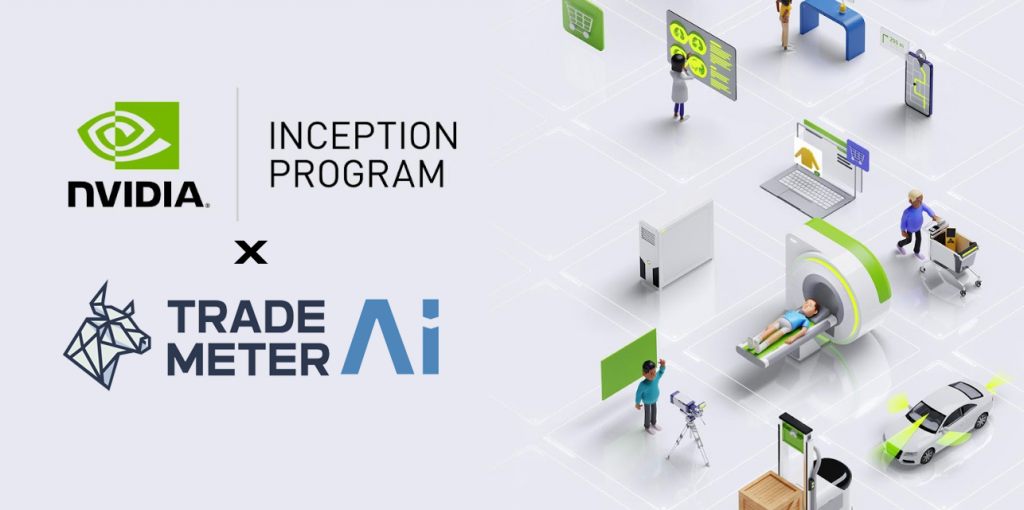Top 10 Tips For Optimizing Computational Resources In Ai Stock Trading, From Penny To copyright
It is important to optimize your computational resources to support AI stock trading. This is especially true when dealing with copyright or penny stocks that are volatile markets. Here are 10 tips to optimize your computational power.
1. Cloud Computing Scalability:
Tip: Leverage cloud-based platforms like Amazon Web Services (AWS), Microsoft Azure, or Google Cloud to scale your computational resources as needed.
Why? Cloud services can be scalable to meet trading volumes, data demands and model complexity. This is particularly beneficial when trading volatile markets like copyright.
2. Choose High-Performance Hardware for Real-Time Processing
Tip. Making investments in computers with high performance that include GPUs and TPUs, is the ideal choice to use for AI models.
The reason: GPUs/TPUs dramatically speed up modeling as well as real-time data processing essential for quick decision-making in markets with high speeds, such as copyright and penny stocks.
3. Optimize data storage and access speeds
Tips: Make use of storage solutions like SSDs (solid-state drives) or cloud services to recover information quickly.
The reason: Rapid access to historical data as well as real-time market information is essential for AI-driven, time-sensitive decision-making.
4. Use Parallel Processing for AI Models
TIP: You can make use of parallel computing to perform many tasks at the same time. This is helpful to analyze various market sectors and copyright assets.
The reason is that parallel processing speeds up data analysis and model building, especially for large datasets from multiple sources.
5. Prioritize Edge Computing for Low-Latency Trading
Utilize edge computing when computations can be processed nearer to the source of data (e.g. exchanges, data centers or even data centers).
What is the reason? Edge computing decreases the latency of high-frequency trading and copyright markets where milliseconds are critical.
6. Algorithm Efficiency Optimized
You can increase the effectiveness of AI algorithms by fine-tuning their settings. Techniques like pruning (removing irrelevant parameters from the model) can be helpful.
The reason: Optimized models use less computational resources, while preserving the performance. This reduces the requirement for a large amount of hardware. It also accelerates trade execution.
7. Use Asynchronous Data Processing
Tip - Use asynchronous processing of data. The AI system will process data without regard to other tasks.
The reason is that this strategy is best suited for markets with a lot of volatility, like copyright.
8. Manage Resource Allocution Dynamically
Use resource management tools that automatically adjust power according to load (e.g. during the time of market hours or during major occasions).
Why: Dynamic Resource Allocation makes sure that AI models are running efficiently, without overloading the systems. This reduces downtime during times of high trading.
9. Use Lightweight models for Real-Time Trading
Tips Choose light models of machine learning that are able to quickly make decisions based upon information in real time, without requiring lots of computing resources.
Why is this? Because in real-time transactions (especially in copyright or penny stocks) rapid decision-making is more crucial than complex models because market conditions are likely to rapidly change.
10. Monitor and optimize computational costs
Tips: Keep track of the computational costs to run AI models in real time and make adjustments to cut costs. Select the best pricing plan for cloud computing based on what you need.
Why: A good resource allocation makes sure that your margins on trading are not harmed when you trade penny stock, volatile copyright markets, or on low margins.
Bonus: Use Model Compression Techniques
To reduce the complexity and size to reduce the complexity and size, you can employ techniques for compression of models, such as quantization (quantification) or distillation (knowledge transfer), or even knowledge transfer.
The reason: Models that are compressed maintain performance while being more resource-efficient, making them ideal for real-time trading, especially when computational power is limited.
If you follow these guidelines, you can optimize the computational power of AI-driven trading strategies, making sure that your strategies are effective and economical, regardless of whether you're trading in penny stocks or cryptocurrencies. View the top rated web site for best ai trading bot for site advice including copyright predictions, incite ai, ai copyright trading, ai stock picker, best ai stock trading bot free, using ai to trade stocks, stock ai, ai copyright trading, best ai stocks, ai penny stocks to buy and more.

Top 10 Tips For Updating And Optimising Ai Stock Pickers And Investment Models, As Well As Predictions.
For accuracy, adaptation to market changes and improved performance, it is vital that AI models are regularly updated and optimized. Your AI models must change with changes in the market. These 10 top tips can help you keep up-to-date and optimise your AI model effectively.
1. Continuously integrate new market data
Tips: Ensure that you regularly integrate the most recent market data, including earnings reports, stock prices macroeconomic indicators, social sentiment to ensure that your AI model is up to date and is able to reflect current market conditions.
AI models that are not regularly updated with the latest data may be outdated. Regular updates improve the precision, predictability, and responsiveness by keeping it in tune to the latest trends.
2. Monitoring Model Performance in real-time
TIP: Monitor the real-time performance of your AI models to determine how they perform in actual market conditions. Find signs of performance loss or drift.
Why: Monitoring your performance allows you to spot issues like the model's performance deteriorating (when accuracy decreases for a model over time) which gives the possibility of intervention and adjustment before major losses.
3. Train the models on a regular basis with updated data
Tip Retrain AI models by using historical data on a regular basis (e.g. every month or once a quarter) to improve the performance of the model.
The reason is that market conditions are always changing and models that are based on older data can become less accurate. Retraining models allows them to learn and adapt from the changing market behavior.
4. Set Hyperparameters for Better Accuracy
Tip: Optimize your hyperparameters regularly (e.g. the rate at which you learn, layers, etc.). Grid search, random search or other optimization techniques are a great way to optimize your AI models.
Why: By tuning the hyperparameters you can increase the precision of your AI model and prevent over- or under-fitting historical data.
5. Try out new features and variables
Tips: Always experiment with new features and data sources (e.g. sentiment analysis and social media posts alternative data sources) to enhance model predictions and discover potential correlations or insights.
Why? Adding more pertinent elements to the model improves its accuracy, allowing it to access to more nuanced information and information.
6. Use ensemble methods to improve your forecasts
Tip: Use methods of ensemble learning such as stacking or bagging to mix AI models. This improves the accuracy of your prediction.
The reason: Ensembles techniques can improve the reliability of AI models. This is because they leverage the strengths of multiple models, and decrease the chance of inaccurate predictions caused by the weaknesses of just one model.
7. Implement Continuous Feedback Loops
Tip : Set up a loop of feedback where actual market outcomes along with model predictions are examined to improve the model.
What is the reason? Feedback loops allows the model to learn from its real-world experiences, identifying any flaws or biases that need to be corrected and re-evaluating its future predictions.
8. Integrate regular stress testing and scenario analysis
Tip. Test your AI models using hypothetical market scenarios like crashes and extreme volatility.
Stress testing is a way to make sure that AI models are prepared for market conditions that are not typical. Stress testing identifies weaknesses that could result in the model performing poorly in volatile or extreme markets.
9. AI and Machine Learning: What's New?
Be informed of the most recent AI advances in AI. Also, experiment with the addition of new techniques to your models, like reinforcement learning and transformers.
What is the reason? AI (artificial intelligence) is a rapidly evolving field. With the help of the latest advancements in technology, you can improve your model's performance, efficiency and precision.
10. Risk Management Assess and continuously adapt to risk management
Tips: Frequently evaluate and refine the risk management aspects of your AI model (e.g. Stop-loss strategies and position sizing, as well as risk-adjusted returns).
The reason is that risk management is crucial in stock trading. The AI model should be regularly evaluated to ensure that it does not just maximize returns, but also manages risk on the market.
Monitor market sentiment to update Models.
Integrate sentiment analysis of social media, news sites, etc. in the model's updates to help it adjust to changes in the investor's psychology and market sentiment. It is possible to update your model to take the changes in investor sentiment and psychology.
Why: Market mood affects stock prices in a major way. Incorporating sentiment analysis into your model will enable it to react to larger emotional or market mood fluctuations that are not easily captured with traditional data.
Conclusion
You can make sure that your AI model in a competitive, precise and adaptable by consistently changing, optimizing and improving the AI stock picker. AI models that are constantly trained, refined and improved with fresh data while integrating real-time feedback from the market and latest AI innovations can give you an edge in the stock market prediction and decision-making process. View the most popular official statement about best ai trading app for blog examples including ai trading software, ai for stock trading, ai trading app, ai trading platform, ai sports betting, best ai copyright, best ai trading bot, stock analysis app, best stock analysis app, best ai trading app and more.

Comments on “20 Great Suggestions For Picking Free Ai Tool For Stock Markets”